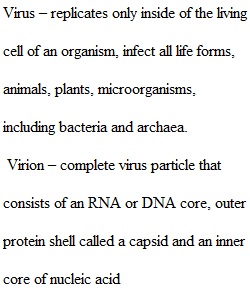


Q Definition Homework for Chapters 13 and 14 Chapter 13 virus virion host specificity lytic cycle lysogenic cycle retrovirus protoncogenes oncogenes tumor suppressor genes malignant metastasis angiogenesis prion spongioform encephalopathy Chapter 14 symbiosis mutualism commensalism parasitism microbiome microbiota transient disease reservoirs zoonoses opportunistic pathogen pathogenicity virulence contact transmission vehicle transmission vector transmission disease sign disease symptom etiology epidemiology incidence prevalence nosocomial infections exogenous endogenous iatrogenic
View Related Questions